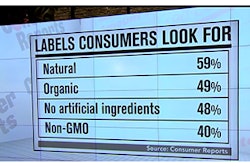I can still vividly recall that phone call last February. My boyfriend, a U.S. Marine, was deployed overseas to Thailand. While I have gotten used to his crazy stories about his recent adventures, this particular one made me cringe in disgust.
“We ate bugs! Lots of them,” he had told me.
By his description, naturally I pictured the scene in the “Lion King” when Timon and Pumbaa lift up a log to find hundreds of tiny creepy crawlers slithering amongst the dirt. Yuck!
The Thai Marines were not, as it turns out, trying to trick them into eating something gross, but instead sharing in what they believe to be a delicacy. Despite the fact that people of American culture consider insects to be pests, approximately 80 percent of the world views eating insects, known as entomophagy, as normalcy.
While the practice may seem extreme, it’s been the way of life for many people around the world for centuries. For example, during Ghana’s rainy season, winged termites are fried or made into breads. And in Japan, aquatic fly larvae sautéed in sugar and soy sauce is a favorite cocktail snack.
A report by the Food and Agriculture Organizations of the United Nations highlights the many prospects insects offer for the future of food. The report notes:
“From ants to beetles larvae — eaten by tribes in Africa and Australia as part of their subsistence diets — to the popular, crispy-fried locusts and beetles enjoyed in Thailand, it is estimated that insect-eating is practiced regularly by at least 2 billion people worldwide.”
With its popularity around the world, I began to wonder about the benefits entomophagy may have on our culture. If Americans could get over the ick-factor, perhaps they would see the nutritional benefits insects provide.
Until then, here are a few reasons I believe Americans should start eating insects.
1. They are nutritious. Many varieties of insects provide between 6 to 30 grams of protein in just one bug. In a serving size of 100 grams, termites contain 14.2 grams of protein, grasshoppers are 20.6 grams of protein and caterpillars are approximately 28.2 grams of protein.
To put this in perspective, a 100-gram serving size of lean ground beef contains 27 grams of protein, according to an article published by FitDay.
Additionally, insects are rich in fiber, calcium, iron, B vitamins, selenium and zinc. They are also seen as a good source of healthy fats.
2. Insects are good for the environment. With concerns of food security on the rise, insects could be the answer by taking the pressure off our land and natural resources. Currently, 40 percent of all land is taken up by agriculture, 70 percent of which is used for growing feed for cattle.
Crickets, for example, need 12 times less feed than cattle to produce the same amount of protein. Insects take up virtually no physical space and can be fed on organic waste streams.
Insects also produce a lot less greenhouse gases. Cattle produce so many greenhouse gases that a kilogram of beef has an impact similar to driving 150 miles in a car. In other words, most insects don’t produce methane as a waste product. Therefore, the world’s greenhouse gas emissions could be significantly reduced.
3. You’re probably already doing it. Although probably unintentional, chances are you probably have already sampled many insects. It’s no secret that, as bugs are a part of nature, they can very easily sneak their way into food. Not only does this happen in the field, but can also occur at food processing facilities.
For these reasons, the U.S. Food and Drug Administration deems it appropriate for certain amounts of insects to be in your food. For instance, canned tomato juice is allowed two whole maggots per 100 grams, and macaroni is able to include 225 insect fragments per 225 grams.
If you’re interested in the different levels of “natural contaminants” that the FDA permits, just read the Food Defect Action Level Handbook.
4. You can cover them in chocolate. If the first three reasons weren’t enough proof that entomophagy is a good thing, perhaps this last reason is. In case you just can’t mask the chewy, slimy or crunchy tastes of eating a bug, there are many options that can help disguise the flavor. Chocolate flavoring might just be enough to persuade me to enjoy a plate of grasshoppers for dinner.
What do you think? Could eating insects be the answer to the world’s call for food? Perhaps you’ve already tried some, how did they taste? I’m curious to learn what others think of this creepy-crawly idea. Feel free to email me at [email protected]






















